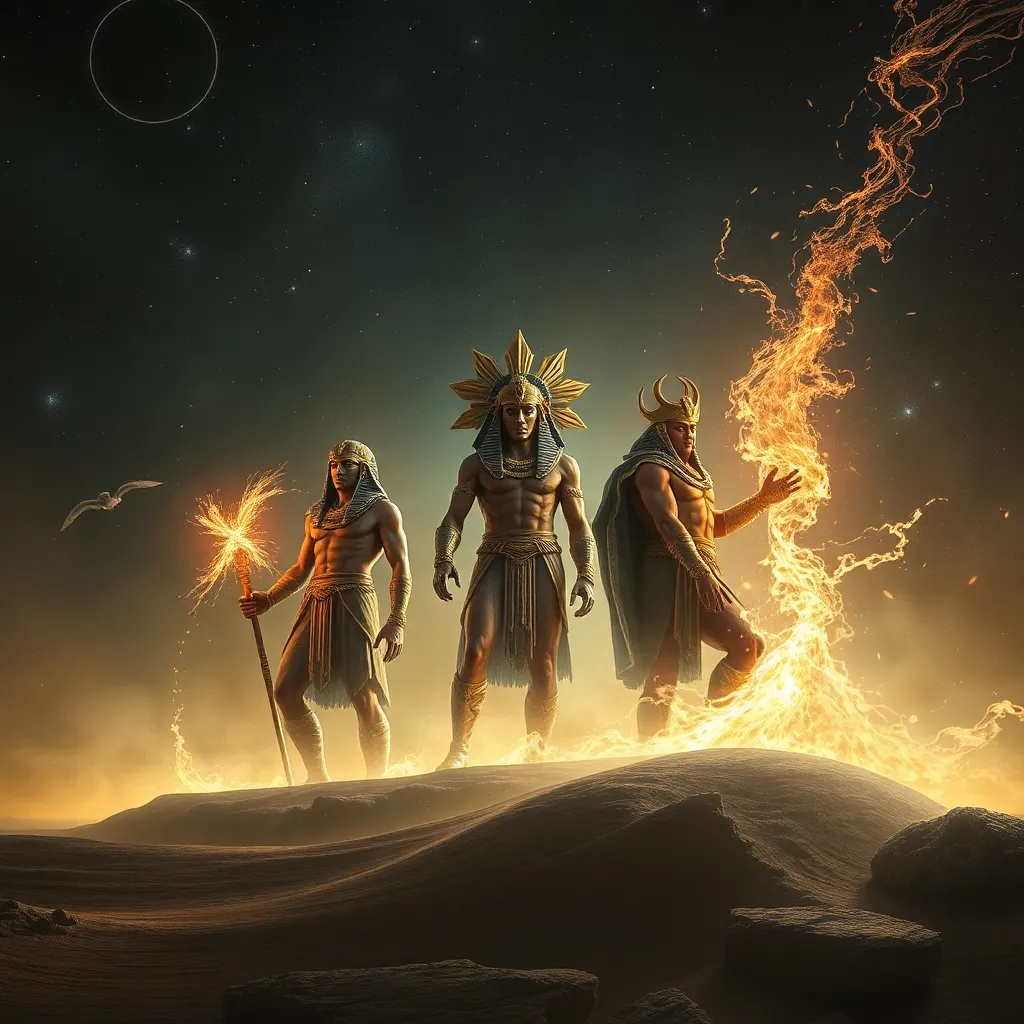The Role of the God Set: Chaos and the Cosmic Struggle
I. Introduction
The God Set, a prominent figure in ancient Egyptian mythology, embodies the complex interplay between chaos and order within the cosmic narrative. Known for his tumultuous nature, Set represents the forces of disorder that challenge the established harmony of the universe. This article aims to delve into the multifaceted role of Set, exploring his historical significance, mythological narratives, and the philosophical implications of chaos in both ancient and modern contexts.
II. Historical Context of the God Set
Set’s origins can be traced back to the earliest periods of Egyptian mythology, where he was initially revered as a protector of the pharaoh and a god of the desert. However, as mythological narratives evolved, so did his portrayal.
- Origins and Evolution: Set emerged as a significant deity by the time of the Pyramid texts, where he was depicted in a more complex light.
- Initial Portrayal: Initially, Set was associated with strength and protection, but over time, his attributes shifted towards chaos and destruction.
- Socio-Political Implications: The worship of Set reflected the political landscape of ancient Egypt, particularly during periods of conflict or instability.
III. Set as a Symbol of Chaos
In mythological contexts, chaos is often understood as a primordial state of disorder that precedes creation. Set’s role as a symbol of chaos is significant, as he embodies both the destructive and creative aspects of this force.
- Definition of Chaos: Chaos is characterized by unpredictability and tumult, often serving as a counterbalance to order.
- Association with Disorder: Set’s actions in mythology frequently lead to chaos, as seen in his conflicts with other gods.
- Duality of Chaos: While chaos can be destructive, it is also a catalyst for change and innovation, reflecting the dual nature of Set.
IV. The Cosmic Struggle: Set vs. Osiris
One of the most notable narratives involving Set is the myth of Osiris, where Set plays a pivotal role in the cosmic struggle between order and chaos.
- Overview of the Osiris Myth: Osiris, the god of the afterlife, is murdered by Set, who seeks to usurp his power.
- Significance of Conflict: This conflict symbolizes the eternal struggle between chaos (Set) and order (Osiris).
- Themes: The themes of death, resurrection, and the balance of power are prevalent, illustrating the cyclical nature of life and the interdependence of chaos and order.
V. Set’s Interactions with Other Deities
Set’s relationships with other gods are complex and often reflect the shifting dynamics of power within the Egyptian pantheon.
- Relationships: Set interacts with gods such as Horus, Isis, and Ra, often as an antagonist but sometimes as a necessary ally.
- Role in the Pantheon: Set’s presence is essential for maintaining cosmic balance, demonstrating that chaos is an integral part of the divine order.
- Shifting Dynamics: The alliances and enmities between deities illustrate the fluid nature of power and influence in mythology.
VI. The Cultural Impact of Set
Set has left a lasting legacy on art, literature, and popular culture, influencing how chaos is perceived in various contexts.
- Influence on Art: Set’s chaotic nature has inspired countless artistic representations, from ancient carvings to modern visual interpretations.
- Modern Interpretations: In contemporary culture, Set is often viewed through the lens of psychological and philosophical explorations of chaos.
- Legacy in Discussions: Set’s story continues to be relevant in discussions about the nature of chaos and its role in human experience.
VII. The Philosophical Implications of Chaos
The tension between chaos and order is a recurring theme in mythology, raising questions about its relevance in modern life.
- Chaos vs. Order: The dichotomy of chaos and order reflects broader human experiences and societal structures.
- Role of Chaos: Chaos is often essential for growth and transformation, prompting individuals and societies to adapt and evolve.
- Lessons from Set’s Narrative: Set’s story teaches us about the necessity of chaos in fostering resilience and creativity in our lives.
VIII. Conclusion
In conclusion, the God Set occupies a crucial role in the cosmic struggle between chaos and order within ancient Egyptian mythology. His narrative illustrates the complex nature of chaos, revealing it as a necessary force in the ongoing cycle of creation and destruction. As we explore these mythological themes, we gain insights into the human experience and the significance of embracing chaos as a catalyst for change. The exploration of Set and his legacy invites further inquiry into the rich tapestry of mythology and its relevance in our modern world.




